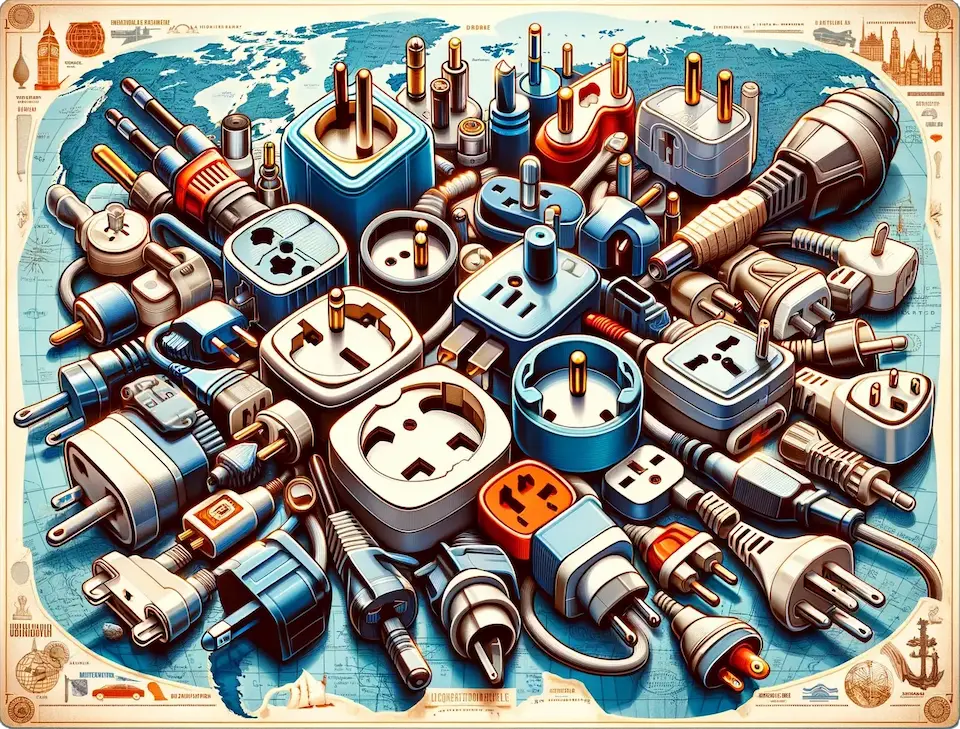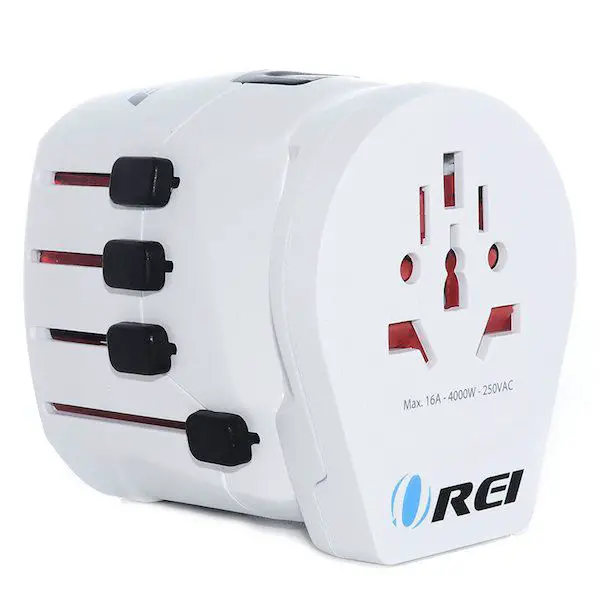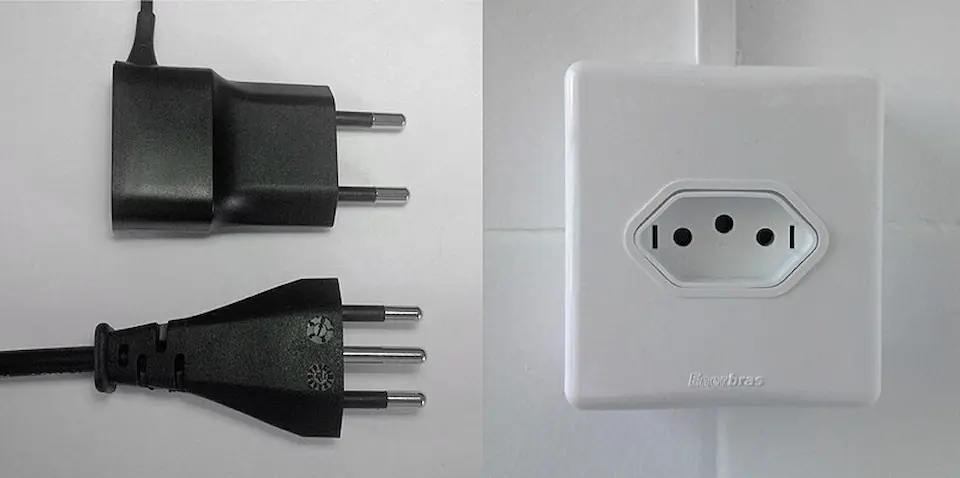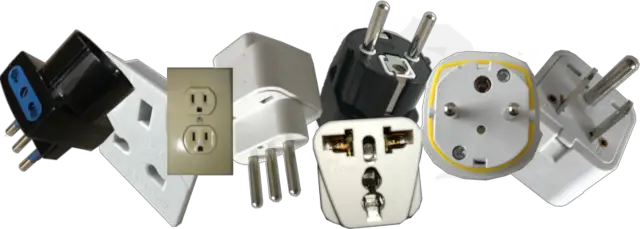The Evolution of Power Sockets Worldwide
Taylor Watts - November 27, 2023
 A collage of various power sockets and adapters from around the world.
A collage of various power sockets and adapters from around the world.
Join us as we plug into the history and future of power sockets! Discover how to navigate the electric maze of global travel and keep your devices energized wherever you roam.
The Evolution of Power Sockets Worldwide 🌍⚡️
Hey there, fellow globetrotters! 🧳✈️ I'm Taylor Watts, your go-to guru for all things travel and tech. Today, we're diving into a topic that's crucial for any savvy traveler – the evolution of power sockets worldwide. So, grab your adapters and let's get charged up for a journey through the electrifying world of plug designs, voltages, and frequencies! 🌟
When we think of traveling, we imagine breathtaking landscapes, exotic foods, and vibrant cultures. But there's a silent companion on all our journeys that we often take for granted – electricity. It's the lifeblood of our digital companions: smartphones, laptops, and cameras. But have you ever wondered why a phone charger that works flawlessly in New York might be a square peg in a round hole in London? 🤔🔌
The answer lies in the fascinating and somewhat fragmented evolution of power sockets. It's a tale that spans the globe and reflects a time when industrial innovation outpaced international standardization. So let's embark on this electrifying narrative of how power sockets have become the unsung heroes of our global adventures. 🌐💡
From Direct Current to a Diverse Current: A Historical Snapshot 🏛️🔋
The story of power sockets is inextricably linked to the tale of electricity itself. In the late 19th century, the war of currents (direct vs. alternating current) set the stage for our modern power systems. Think of it as the ‘Game of Thrones’ of the electrical world, with Thomas Edison and Nikola Tesla as the leading characters. As alternating current (AC) emerged victorious, it paved the way for the power sockets we know today. ⚔️🎇
But why the myriad of shapes, sizes, and configurations? It's like the Tower of Babel but for electronics. Each country developed its own system, often shaped by local inventions, safety concerns, and a dash of national pride. This has led to a world where over 15 types of power sockets are in use. Talk about diversity! 🌍🔧 Go to our two step-wizard and look, pick a departure and arrival country, you will find out all the diversity of plugs.
A World Powered by Variety: Understanding Socket Types 🔄🛠️
If you're a frequent traveler, you've likely encountered the alphabet soup of socket types – Type A, B, C, and so on. These aren't just arbitrary letters; they represent the unique designs adopted by different countries. For instance, Type A and B are common in the Americas, while Europe favors Types C, E, and F. And let's not even get started on the UK's sturdy Type G or Australia's distinctive Type I. 🇪🇺🇬🇧🇦🇺
This patchwork of plugs can be bewildering, but fear not! It's all about safety and compatibility with the local electrical grid. And while it may seem like a hassle, it's a testament to the ingenuity and diversity of our world. Plus, it's a great excuse to invest in some cool travel adapters! 😎🌏
Voltage and Frequency: The Invisible Variables 🔍⚡
But wait, there's more! Beyond the shape of the socket lies the invisible but crucial elements of voltage and frequency. Voltage varies from 100V in Japan to 240V in the UK, while frequency swings between 50 and 60 Hz. This means even with the right plug, your device might not be getting the power it expects. It's like trying to run a marathon after eating a huge meal – not ideal. 🏃♀️🍔
This is where your devices' power adapters come into play. They're the unsung heroes, often capable of handling a range of voltages and frequencies, ensuring your gadgets stay powered up without a hiccup. Phew! 🙌💼
Traveling with Tech: Why It Matters 🌟📱
Now, you might wonder, "Why all this fuss about sockets and electricity?" Well, in our connected world, staying powered up is non-negotiable. Whether it's for staying in touch with loved ones, navigating unfamiliar streets, or capturing memories, our devices are indispensable travel companions. And there's nothing worse than a dead battery when you're trying to snap a selfie with the Eiffel Tower. 🤳🗼
 Majestic Eiffel Tower at Night
Majestic Eiffel Tower at Night
Plus, being informed means you can avoid those pesky travel mishaps like frying your favorite hair straightener or missing an important email because your laptop won't charge. And trust me, a travel adapter is much cheaper than replacing your gadgets! 💻🔥
Embracing the Journey: The Role of Adapters and Converters 🎒🔌
As we've established, travel adapters are a must-have in your travel kit. But let's not confuse adapters ...with converters.
While adapters are the physical connectors that let your plugs fit into foreign sockets, converters are the magicians that transform the voltage to match your device's needs. So, before you pack, check if your devices are ‘dual voltage’ (able to handle both 110 and 220 volts). If not, you'll need a converter to keep things safe and sound.
Remember, a fried device is no one’s travel buddy. So, if your device reads ‘single voltage,’ do not pass go, do not collect $200, head straight to the nearest store for a converter. Better safe than sorry, right? 🔒💡
 Before connecting an American device, you need to verify the etiquette states "100-240"V (so it will be ok to plug it
into a 240V socket, like the ones in Europe).
Before connecting an American device, you need to verify the etiquette states "100-240"V (so it will be ok to plug it
into a 240V socket, like the ones in Europe).
Navigating the World of Power Sockets and Adapters 🧭🌐
Armed with the knowledge of adapters and converters, you'll need a strategy for dealing with the plethora of power sockets you'll encounter. Here’s a mini-guide:
- Research before you go: A quick use of our world-recognised electric travel wizard will tell you exactly what type of plug and voltage is used in your destination country.
- Universal travel adapters: These are the Swiss Army knives of adapters, often equipped to handle multiple socket types.
- USB is your friend: Many devices charge via USB, and USB ports are increasingly common worldwide.
- Pack spare adapters: They're light, not too expensive, and you'll be the hero of the hour for fellow travelers in need.
By planning ahead, you can ensure that you're never caught powerless, no matter where you find yourself.
 Protected Adapter, notice the red plastic, that is the safety mechanism; get it on Amazon.
Protected Adapter, notice the red plastic, that is the safety mechanism; get it on Amazon.
The Future of Power Sockets: A Unified Vision? 🔮🌍
As we look to the future, could we see a world with a universal power socket? Well, the International Electrotechnical Commission (IEC) did propose a universal standard (IEC 60906-1), but it hasn’t caught on. Change is slow when infrastructure and billions of devices are involved. However, the rise of USB charging and wireless technology might leapfrog traditional sockets altogether. Imagine a world where power flows as freely as WiFi. Now, that’s a future I can get excited about!
 The IEC 60906-1 world standard it never was.
The IEC 60906-1 world standard it never was.
Sustainability and Power: Green Tech on the Move 🌱🔋
But it’s not just about convenience. As eco-conscious travelers, we need to think about the impact of our energy use. Solar-powered chargers and power banks are becoming more popular and are a step towards greener travel. And let's not forget about hotels and airports that are incorporating sustainable practices with energy-saving technologies.
So next time you're out there capturing the Northern Lights on your camera, remember that sustainable power solutions are not just good for the planet; they’re good for your conscience too. 🌌📸
Power and Culture: Socket Styles Tell a Story 📖🔌
Believe it or not, power sockets can tell us a lot about a country’s history and culture. For instance, the British three-pin plug, praised for its safety features, reflects a period when electrical safety became a paramount concern for the UK. Meanwhile, the two-pin plugs found in much of Europe hark back to earlier days of electricity when grounding was less of a concern.
Each socket type has a story, a reason for its design, and understanding these can add an unexpected layer to your travel experiences.
The Tech-Savvy Traveler's Checklist ✅📱
To help you prepare for your next adventure, here's a quick checklist to keep your electronics happy and healthy:
- Know your destination's plug and voltage: Keep a note on your phone or in your travel diary.
- Invest in quality travel adapters and converters: Don't skimp on these essentials.
- Check your devices for dual voltage capability: This can save you a lot of hassle.
- Consider energy-efficient and sustainable options: They’re better for the planet and often more convenient.
- Backup plans are crucial: Have an extra adapter and power bank ready just in case.
With these tips in mind, you're ready to conquer the world’s power sockets with confidence and grace.
Conclusion: Powering Your Travel Dreams 💭🌟
As we wind down this electrifying journey through the world of power sockets, let’s reflect on the bigger picture. The variety of sockets and voltages around the world is not just a quirk of history; it's a reflection of our diverse and dynamic world. It's a reminder that even in our globalized age, local flavors and individuality are still alive and well.
Travel is all about embracing new experiences and adapting to different ways of life. So, the next time you plug in your charger in a foreign land, take a moment to appreciate the incredible journey electricity has made to reach you. It's a modern-day marvel that powers us.
Signing off with sparkles, Taylor 💫
Thanks for reading, I hope you found the article useful; please feel free to contact us for any question (link at bottom "Contact & Suggestions").
If you found this article useful, help us by sharing it!
↬ a link from your website helps too.
